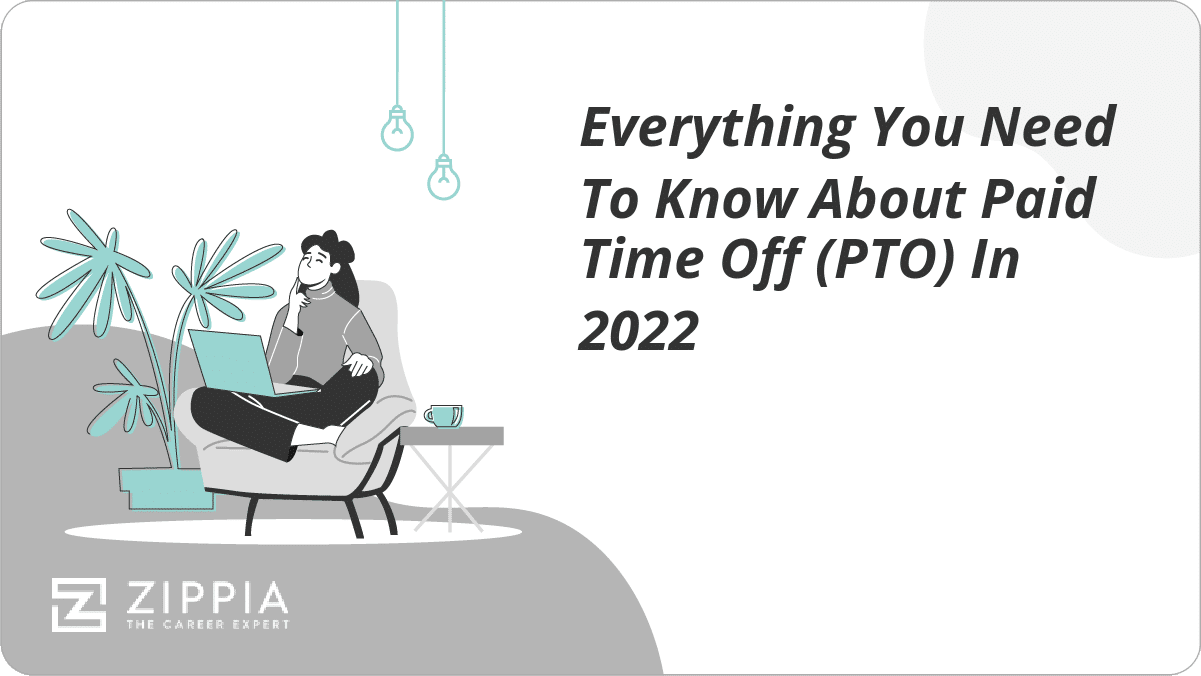- Determine Your Worth
- Average Salaries In The US
- What Is A Salary Range?
- What Is A Base Salary?
- What Is A Pay Grade?
- Average Salary Out Of College
- Your Salary History
- Competitive Pay
- Salary Vs. Hourly Pay
- What Is A Job Classification?
- How Many Hours Can A Teen Work?
- Average Work Hours Per Week
- What Is Annual Income
- Gross Salary
- How Many Hours Is Full Time
- How Many Work Hours In A Year
- Minimum Wage For Workers Who Receive Tips
- New York State Minimum Wage Rates
- Get A Raise
- Benefits
- Paid Time Off Policy (PTO)
- Leave of Absence Policy
- What Are Floating Holidays?
- What Are Employer-Paid Holidays?
- How Does Holiday Pay Work
- How Does A Stipend Work
- Cash a Paycheck Without a Bank Account
- What Is Compensatory Time?
- What's Unlimited Vacation?
- What Is A Commission?
- What Is A Mileage Deduction?
- Semimonthly Vs Biweekly Pay Schedules
- Flexible Spending Account
- Stock Options At Job
- Benefits Package
- Overtime Pay
- Workers Comp
- What Is Fmla
- Hazard Pay
- Tuition Reimbursement
- Discretionary Vs. Non-Discretionary Bonus
- What Are Union Benefits
- What Is An HRA Account
- What Is Cobra Insurance
- Negotiation
- What Exactly Is a Job Offer?
- How To Negotiate Salary
- Exempt Employee
- How To Answer Salary Requirements
- Employment History
- What Are Your Salary?
- Salary Counter Offer
- How To Answer Salary Expectations
- How Many Hours Is Part Time
- Signing Bonus
- Cost Of Living Adjustment
- How To Ask For A Salary Advance
- What Is Fair Labor Standards Act
Find a Job You Really Want In
Understanding all the elements of your employer benefit plan can be tricky. Perhaps no benefit generates more confusion than a flexible spending account.
In this article, we’ll discuss what a flexible spending account is, how it works, and how to decide if it’s something you should be taking advantage of.
What Is a Flexible Spending Account?
A flexible spending account (FSA) is an employer-sponsored benefit used to pay for medical expenses before tax. FSAs are also called flex plans, flexible spending arrangements, or reimbursement accounts.
The money you dedicate to an FSA is deducted from taxable income, saving you money on taxes each year. Additionally, your employer can choose to contribute to your FSA as well, granting you even more cash to spend on health costs.
Employees can devote up to $2,750 to an FSA each year and use that money as a savings account for qualified medical expenses. Employees fund their FSAs through payroll deductions, automatically setting aside money for health-related costs.
FSAs operate on an annual basis, with an open enrollment period once a year (usually around when you would sign up for health insurance). If you don’t use money in your FSA by the end of the year, those funds are forfeited to your employer. Therefore, it’s essential not to devote more money to an FSA than you intend on using, or you’re simply throwing money anyway.
However, employers can choose to offer one of two options: allowing you an additional two and a half months to use the funds or rolling over $500 to the following year. Note that employers are not obligated to offer either option, so check with your human resources department for clarification.
How FSAs Work
FSAs generally work one of two ways: you either receive a debit card to directly utilize funds in your account, or you submit receipts for reimbursement.
At the start of each plan year, your employer will ask you to determine the size of your annual contribution. That amount will then be taken out of your paycheck in equal installments over the year and placed into your FSA. If you need to receive reimbursements for incurred medical expenses, you would submit an Explanation of Benefits or an invoice/proof of payment to your plan’s administrator.
Regardless of the system your FSA uses, know that you can use money from your FSA to pay for your own medical expenses or those of your spouse or your dependents. If you have children on your health plan that will be 26 or younger by the end of the calendar year, you can also use money in your FSA for their medical costs.
One of the few stipulations of FSAs is that you cannot use them to pay for insurance premiums. Other than that, you’re eligible to use money in your FSA for deductibles, prescriptions, dental care, vision care, and copayments.
As of the 2020 CARES Act, you are eligible to spend money in your FSA on over-the-counter medications, quarantine and social-distancing aids, and menstrual care products. These changes are permanent and will remain moving forward.
We can’t possibly cover every medical cost that FSAs can be utilized for. Basically, if your health insurance doesn’t cover it, it’s not an insurance premium, and it’s not an elective procedure, you’re eligible to use your FSA to pay for it. Review the FSAstore’s comprehensive eligibility list for answers to any specific questions you have.
Types of FSAs
So far, we’ve covered general FSAs, but your employer may offer other, more attractive options (depending on your situation). Of particular interest for parents or anyone caring for a relative is a Dependent Care FSA.
Dependent Care FSAs allow employees to set aside money (tax-free) to use for dependent care costs. Importantly, these accounts are not limited to medical expenses and can be used for things like daycare or transporting your (dependent) elderly relative to and from medical appointments.
Employees can contribute up to $5,000 annually per household to a DCFSA. Children under 14 and any tax-dependent relatives (including your spouse) who are incapable of self-care are deemed eligible dependents on whom you can spend money from your DCFSA.
Additionally, there are Limited Purpose FSAs, which, as the name suggests, can only be used for specific expenses. Your employer chooses the limitations; typically for vision and dental expenses.
To enroll in an LPFSA, you must have a high-deductible health plan (HDHP) and a health savings account (HSA). These are an excellent option for someone who has expected or regular dental or vision expenses and wants to pay for them tax-free.
Deciding if an FSA Is Right For You
Remember that FSAs operate under a “use-it-or-lose-it” model, so any money you allocate to your FSA that is unspent by the end of the year is forfeited, excepting the $500 roll-over or 2.5-month extension some plans offer. With that in mind, it becomes a delicate balance of reducing your tax burden through FSA contributions and not letting your contributions go to waste.
Generally speaking, if you’re a young, healthy person, an FSA may not be very useful for you. Without an ongoing medical condition, you’re unlikely to have many out-of-pocket healthcare-costs in a given year, which is what FSAs are meant to cover.
On the other hand, if you have regular medical expenses, dedicating a portion of your paycheck toward an FSA can be seen as a simple way to boost your net income. Ultimately, you’re using pre-tax dollars for a predetermined expense, which could save you a lot of money over time.
Deciding whether an FSA is right for you involves reflecting on your health. Look back over what you spent on medical expenses during the last year to try to gauge whether you should enroll in an FSA or, if you’re already enrolled, how much you should contribute to it. If you don’t expect to have many out-of-pocket medical expenses over the year, then contributing to an FSA may waste more money than it saves in tax relief.
Another thing to consider is whether your FSA covers dependent care. If you pay hundreds or thousands of dollars each year on daycare or after-school care, and your employer’s FSA covers such costs, then enrolling in an FSA is a no-brainer. You’re essentially able to pay for those expenses pre-tax, which could net you substantial savings.
Additionally, a limited purpose FSA might be the perfect fit if you already have an HSA and want a piggy bank to pay for dental or vision expenses. This might even work out to be cheaper than getting dental insurance, especially if you have a good idea of your annual dental expenses.
Flexible Spending Account Tips
If you opt to use a flexible spending account, keep these tips in mind to get the most bang for your buck:
-
Learn about your plan’s “grace period.” As we’ve indicated throughout, most FSAs expire at the end of the plan year (not necessarily calender year).
However, it’s not uncommon for plans to include a grace period that allows for extra time to incur medical expenses that can be covered by money remaining in your flexible spending account. This grace period is two-and-a-half months long, giving you until March 15th to incur these expenses, if your plan follows the calender year.
-
Identify your plan’s “carry over” amount. An FSA rollover allows you to carry over some portion of your previous year’s plan contributions to the following year. Not every plan includes a carry over amount, but $500 is a fairly normal carry over amount that plans use.
To look at an example, if you contributed $2,000 to your FSA but only used $1,250 during the year, you’d have $750 sitting unused in your account. Instead of all that money being forfeited, only $250 would be, while $500 would remain in the account as the starting balance for the next plan year.
With some tactical planning with regard to your plan’s grace period and carry over amounts, you can ensure that you get your money’s worth and never leave money on the table.
-
Get receipts for everything. Regardless of whether your plan includes a debit card you directly use for medical expenses or it’s a reimbursement system, getting and keeping your receipts is vital.
Documentation is essential for showing that the expense incurred was eligible to be paid for with funds from your flexible spending account. Make sure you receipts include these important details:
-
The total amount
-
Date of purchase
-
An eligible item/service
-
The health care provider/merchant’s name
-
-
Budget at the start of the year. One of the best ways to plan your flexible spending account contributions for the future is to look at your past. If you keep good financial records (or you have an accountant that does), identify exactly how much you spent on medical expenses in the previous year, and then go a step further to see which items would be eligible under your FSA plan.
If you don’t keep great records, at least try to come up with a ballpark estimate of what you spend on FSA-eligible medical expenses each year. For example, if you know that you spend around $150 a month on prescriptions and copayments, you can opt to contribute $1,800 (12 x $150) to your FSA each year.
-
Use your FSA as often as you can. The use-it-or-lose-it nature of FSAs incentivizes you to use them every opportunity you get. Out of pocket expenses that your health plan doesn’t cover, like copayments, prescriptions, and deductibles, should always be items that you use your FSA for (when purchasing eligible items or servcices).
Flexible Spending Account FAQs
-
How much money will I save with an FSA?
The average tax savings for an individual earning $50,000 who contributes $2,000 into an FSA is around $600, according to the United States Office of Personnel Management (OPM). Note that these are only actually “savings” if you indeed use all $2,000 from your FSA over the year.
-
What’s the difference between an FSA and an HSA?
A health savings account is an individual account, meaning it’s not tied to your employer or employment. Individuals must have a high-deductible health plan (HDHP), with a minimum deductible of $1,400 for individuals or $2,800 for families, in order to sign up for an HSA.
HSAs have a higher annual contribution cap of $3,550 for individuals and $7,100 for families.HSAs are used as more than just a piggy bank for medial expenses – they are investment accounts that you make tax-deductible contributions to, and they grow tax-deferred. Qualified healthcare expenses you pay for through an HSA are also not taxed.
HSAs do not expire each year and automatically rollover. You can withdraw from your HSA savings tax-free after the age of 65. You may also withdraw earlier than that, but you will have to pay income tax if you do and are additionally subject to a 20% penalization.
-
What’s the difference between an FSA and an HRA?
The difference between an FSA and an HRA is that while FSAs are funded through employee contributions (primarily; your employer may choose to contribute something as well), HRAs (health reimbursement accounts) are funded only through employer contributions.
HRAs may have different eligible expenses than an FSA, meaning they could be incredibly generous or limited, depending on your employer’s plan. Some HRAs may even allow you to spend the money on insurance premiums. Basically, HRAs are a no-lose option for employees.
-
What expenses are not eligible through an FSA?
For a typical healthcare FSA, elective procedures are an ineligible expense. Things like teeth whitening, hair transplant, or cosmetic surgery cannot be purchased or reimbursed through an FSA.
Additionally, FSAs cannot be used to pay for gym memberships or contract expenses for regular maintenance or replacement of eyeglasses or contact lenses.
-
What happens to my FSA if I leave my employer?
Since FSAs are owned by your employer, they do not follow you when you leave your company. As such, any money currently in your FSA is forfeited at the time of your departure.
If you’re receiving a severance package that extends your health benefits for a certain duration, you may be able to utilize money in your FSA during this time.
-
How much should I contribute to my FSA?
There’s no one-size-fits-all answer to this question. Deciding on your annual contribution requires you to plan ahead and estimate how much you’ll spend on healthcare-related costs.
Additionally, if you have a DCFSA, you’ll have to consider what exactly it covers and how much you spend on eligible childcare expenses in a given year.
-
What are some drawbacks of FSAs?
The most significant disadvantage of FSAs is that you lose any unspent money at the end of each year. While employers may opt to roll over up to $500 or extend your timeframe for using these funds by 2.5 months, neither of these options is mandatory.
Learn everything you can about deadlines, rollovers, and extensions to ensure you’re maximizing an FSA’s benefits.
-
Can I double-dip from my limited purpose FSA and HSA?
No, you cannot double-dip from your limited purpose FSA and HSA. Even if your HSA and LPFSA both cover an eligible expense, you may not use funds from both accounts for reimbursement.
Generally, it’s a better idea to use your LPFSA when eligible since, by definition, your HSA covers more potential expenses. Additionally, your HSA rolls over and follows you wherever you’re employed, so there’s no pressure to use those funds quickly as there is with an LPFSA.
-
How common are FSAs? 68% of employers offer flexible spending accounts, according to a recent survey by SHRM.
- Determine Your Worth
- Average Salaries In The US
- What Is A Salary Range?
- What Is A Base Salary?
- What Is A Pay Grade?
- Average Salary Out Of College
- Your Salary History
- Competitive Pay
- Salary Vs. Hourly Pay
- What Is A Job Classification?
- How Many Hours Can A Teen Work?
- Average Work Hours Per Week
- What Is Annual Income
- Gross Salary
- How Many Hours Is Full Time
- How Many Work Hours In A Year
- Minimum Wage For Workers Who Receive Tips
- New York State Minimum Wage Rates
- Get A Raise
- Benefits
- Paid Time Off Policy (PTO)
- Leave of Absence Policy
- What Are Floating Holidays?
- What Are Employer-Paid Holidays?
- How Does Holiday Pay Work
- How Does A Stipend Work
- Cash a Paycheck Without a Bank Account
- What Is Compensatory Time?
- What's Unlimited Vacation?
- What Is A Commission?
- What Is A Mileage Deduction?
- Semimonthly Vs Biweekly Pay Schedules
- Flexible Spending Account
- Stock Options At Job
- Benefits Package
- Overtime Pay
- Workers Comp
- What Is Fmla
- Hazard Pay
- Tuition Reimbursement
- Discretionary Vs. Non-Discretionary Bonus
- What Are Union Benefits
- What Is An HRA Account
- What Is Cobra Insurance
- Negotiation
- What Exactly Is a Job Offer?
- How To Negotiate Salary
- Exempt Employee
- How To Answer Salary Requirements
- Employment History
- What Are Your Salary?
- Salary Counter Offer
- How To Answer Salary Expectations
- How Many Hours Is Part Time
- Signing Bonus
- Cost Of Living Adjustment
- How To Ask For A Salary Advance
- What Is Fair Labor Standards Act





